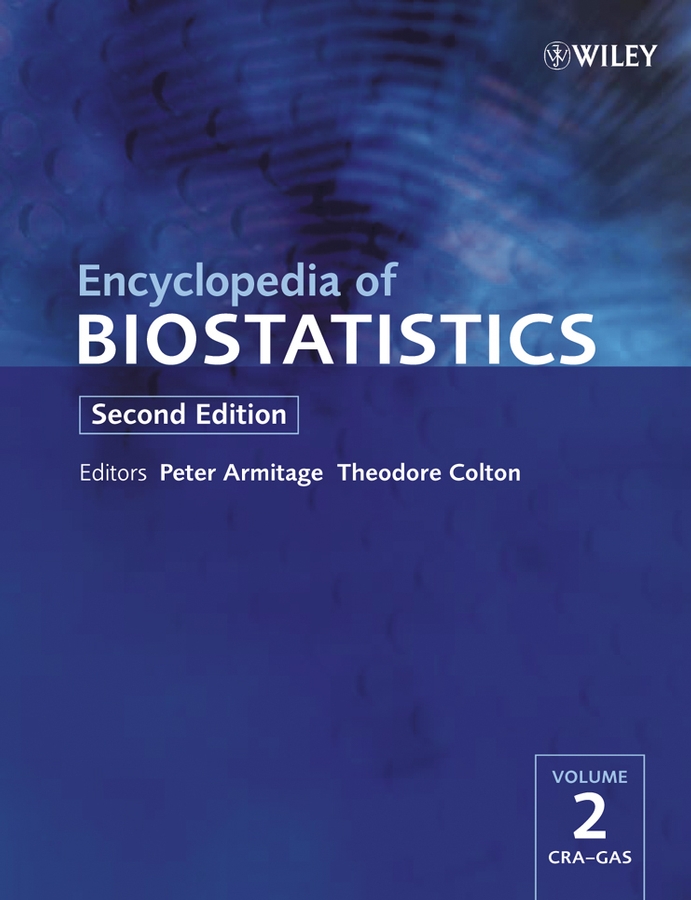Econometric Methods in Health Services
Matthew L. Maciejewski
University of Washington, Seattle, WA, USA
Search for more papers by this authorPaul L. Hebert
Mount Sinai School of Medicine, New York, NY, USA
Search for more papers by this authorMatthew L. Maciejewski
University of Washington, Seattle, WA, USA
Search for more papers by this authorPaul L. Hebert
Mount Sinai School of Medicine, New York, NY, USA
Search for more papers by this authorAbstract
The purpose of this article is to provide a brief summary of prominent econometric applications in modern health economics, by providing a broad overview of problems to which econometric methods have been applied. These methods typically are used to address problems in health, health care delivery, and health care costs from a cross-section of observations at a given time. The chapter considers methods for analyzing continuous outcomes, such as cost; continuous, nonnormally distributed outcomes; simultaneous equation methods; and methods for count data, such as utilization data.
References
- 1 Alexandre, P. K. & French, M. T. (2001). Labor supply of poor residents in Metropolitan Miami, Florida: the role of depression and the co-morbid effects of substance use, The Journal of Mental Health Policy and Economics 4, 161–173.
- 2 Austin, P. C. (2002). A comparison of methods for analyzing health-related quality-of-life measures, Value in Health 5, 329–337.
- 3 Blough, D. K., Madden, C. W. & Hornbrook, M. C. (1999). Modeling risk using generalized linear models, Journal of Health Economics 18, 153–171.
- 4 Bound, J., Jaeger, D. A. & Baker, R. M. (1995). Problems with instrumental variables estimation when the correlation between the instruments and the endogenous explanatory variable is weak, Journal of the American Statistical Association 90, 443–450.
- 5
Bretteville-Jensen, A. L.
(1999).
Gender, heroin consumption and economic behaviour,
Health Economics
8,
379–389.
10.1002/(SICI)1099-1050(199908)8:5<379::AID-HEC458>3.0.CO;2-J CAS PubMed Web of Science® Google Scholar
- 6
Cameron, A. C. &
Trivedi, P. K.
(1998).
Regression Analysis of Count Data.
Cambridge University Press,
Cambridge.
10.1017/CBO9780511814365 Google Scholar
- 7 Deb, P. & Trivedi, P. K. (2002). The structure of demand for health care: latent class versus two-part models, Journal of Health Economics 21, 601–625.
- 8 Dowd, B., Feldman, R., Cassou, S. & Finch, M. (1991). Health plan choice and the utilization of health care services, Review of Economics and Statistics 73, 85–93.
- 9 Duan, N. (1983). Smearing estimate: a nonparametric transformation, Journal of the American Statistical Association 78, 605–610.
- 10 Feldman, R., Finch, M., Dowd, B. & Cassou, S. (1989). The demand for employment-based health insurance plans, Journal of Human Resources 24, 115–142.
- 11 Gaynor, M. (1989). Competition within the firm: theory plus some evidence from medical group practice, RAND Journal of Economics 20, 59–76.
- 12 Gaynor, M. & Gertler, P. (1995). Moral hazard and risk spreading in partnerships, RAND Journal of Economics 26, 591–613.
- 13
Greene, W. H.
(2000).
Econometric Analysis,
4th Ed.
Prentice Hall,
Upper Saddle River.
10.1111/0002-9092.00010 Google Scholar
- 14 Greenland, S. (2000). An introduction to instrumental variables for epidemiologists, International Journal of Epidemiology 29, 722–729.
- 15 Hahl, J., Hamalainen, H., Sintonen, H., Simell, T., Arinen, S. & Simell, O. (2002). Health-related quality of life in type 1 diabetes without or with symptoms of long-term complications, Quality of Life Research 11, 427–436.
- 16
Hamilton, B. H.
(1999).
HMO selection and medicare costs: Bayesian MCMC estimation of a robust panel data tobit model with survival,
Health Economics
8,
403–414.
10.1002/(SICI)1099-1050(199908)8:5<403::AID-HEC455>3.0.CO;2-D CAS PubMed Web of Science® Google Scholar
- 17 Heckman, J. J. (1979). Sample selection bias as a specification error, Econometrica 47, 153–161.
- 18
Jones, A. M.
(2000).
Health econometrics, in
Handbook of Health Economics,
A. J. Culyer, &
J. P. Newhouse, eds.
Elsevier,
New York,
265–344.
10.1016/S1574-0064(00)80165-1 Google Scholar
- 19 Judge, G. G., Griffiths, W. E., Hill, R. C., Lutkepohl, H. & Lee, T. -C. (1985). The Theory and Practice of Econometrics, 2nd Ed. John Wiley & Sons, New York.
- 20 Kennedy, P. (1998). A Guide to Econometrics, 4th Ed. MIT Press, Cambridge.
- 21 Maciejewski M. L., Diehr, P. D., Smith, M. A. & Hebert, P. L. (2002). Common methodological terms in health services research and their symptoms, Medical Care 40, 477–484.
- 22
Maddala, G. S.
(1983).
Limited-Dependent and Qualitative Variables in Econometrics.
Cambridge University Press,
Cambridge.
10.1017/CBO9780511810176 Google Scholar
- 23 Manning, W. G. (1998). The logged dependent variable, heteroskedasticity, and the retransformation problem, Journal of Health Economics 17, 283–295.
- 24 Manning, W. G. & Mullahy, J. (2001). Estimating log models: to transform or not to transform? Journal of Health Economics 20, 461–494.
- 25 McClellan, M., McNeil, B. J. & Newhouse, J. P. (1994). Does more intensive treatment of acute myocardial infarction in the elderly reduce mortality? Analysis using instrumental variables, JAMA 272, 859–866.
- 26 Meng, C. & Schmidt, P. (1985). On the cost of partial observability in the bivariate probit model, International Economic Review 26, 71–86.
- 27 Mullahy, J. (1997). Instrumental variable estimation of count data models: applications to models of cigarette smoking behavior, Review of Economics and Statistics 79, 586–593.
- 28 Nelson, C. R. & Startz, R. (1990). Some further results on the exact small sample properties of the instrumental variables estimator, Econometrica 58, 967–976.
- 29 O'Donnell, O. (1993). Income transfers and the labour market participation of disabled individuals in the UK, Health Economics 2, 139–148.
- 30 Tobin, J. (1958). Estimation of relationships for limited dependent variables, Econometrica 26, 24–36.
- 31 Van de Ven, W. P. & van Praag, B. (1981). The demand for deductibles in private health insurance, Journal of Econometrics 17, 229–252.
- 32 Welsh, A. H. & Zhou, X. H. (2002). Estimating the Retransformed Mean in a Heteroscedastic Two-Part Model, Working Paper.



